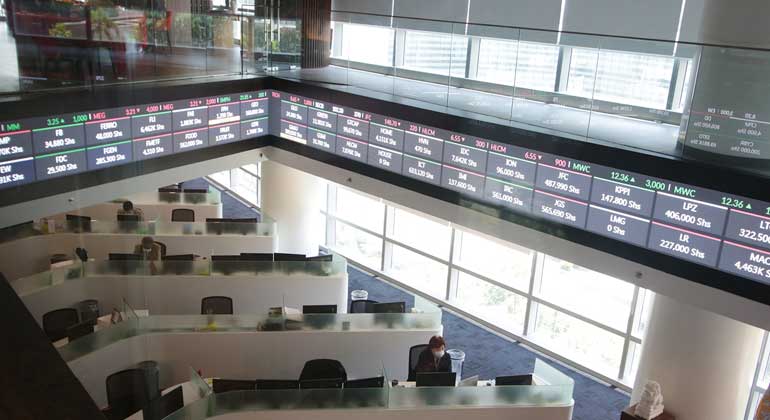EQUITY INVESTORS in Asia are actively screening hospitalization rates and watching predictions on virus peaks, as several countries in the region struggle with a fresh jump in cases.
The pandemic’s resurgence has already worsened Asian stocks’ underperformance against their global peers this year. With efforts by countries to reopen their economies taking a hit, the severity of restrictions, the pace of increase in caseloads, the preparedness of governments and progress in vaccination rollouts have become key yardsticks for stock traders.
“We continue to monitor the infection numbers across Asia, in terms of whether we are starting to see the peak in infection numbers,” said Tai Hui, chief Asia market strategist at JPMorgan Asset Management. “Northeast Asian markets are arguably more resilient than Southeast Asia. China is still in its own league when it comes to containing the pandemic, despite some weaker-than-expected economic data for April.”
A surge in virus cases in Taiwan and Singapore last week contributed to a 3.2% plunge in the MSCI Asia Pacific Index, the biggest weekly loss since February. Indonesia’s stock benchmark narrowly missed a technical correction on Tuesday over fears that an expected jump in COVID-19 cases post Eid holidays could hurt the economic recovery. While stock gauges in Taiwan and Singapore have bounced back, they are still among the world’s worst performers this month.
“Countries are becoming too ‘comfortable’ with respect to COVID-19, and this could delay full recovery,” said Paul Sandhu, head of multi-asset quant solutions Asia Pacific at BNP Paribas Asset Management. “This is the biggest risk I see right now.”
That investors are watching factors other than just an increase in caseloads is evident from the market’s varied response to the pandemic situation in different countries. Even as their peers in Taiwan and Singapore got hammered after the latest flareups, equity benchmarks in India and Vietnam have continued to defy similar worries and are outperforming the broader MSCI Asia Pacific Index this month.
While India is battling the world’s worst outbreak of COVID-19, the S&P BSE Sensex has rallied 2.9% so far in May, with investors taking comfort from less-stringent curbs on activity as the government tries to limit the blow to the economy. The VN Index is also up 1.2% this month and hit a record last week, as retail investors pile into Vietnam stocks.
Cases in India may have peaked and investors are now looking at how quickly the wave descends along with how quickly vaccinations can be deployed, analysts at Morgan Stanley wrote in a note.
“In particular, I will be watching developments in Singapore given their relatively good progress in vaccination, which I hope will be an example of what the rest of Asia should be working towards,” said JPMorgan Asset’s Mr. Hui.
Meanwhile, the Philippine Stock Exchange index has slumped almost 13% this year, making it the world’s worst-performing major benchmark, amid growing concerns over the economy’s recovery.
With the utilization of ICU beds and ventilators already running at about 50% and 40%, respectively, “an acceleration in cases would likely prompt the government to announce a more severe lockdown,” said Gary Dugan, chief executive officer at Global CIO Office.
Southeast Asia’s stock benchmark is lagging the broader Asia-Pacific region for a second straight month, reversing two months of outperformance marked by the value rotation, as Singapore, Malaysia and Thailand adopt stronger restrictions on movement.
“In Southeast Asia, the benefit from strong exports still exists, but weakness in domestic demand because of lockdown measures could delay recovery more so than in Northeast Asia, including tourism,” said Mr. Hui. — Bloomberg

